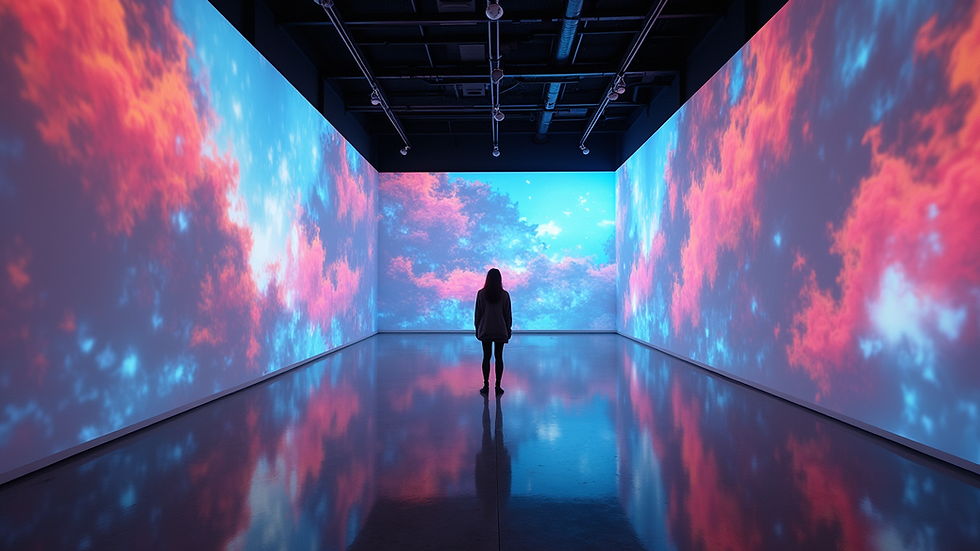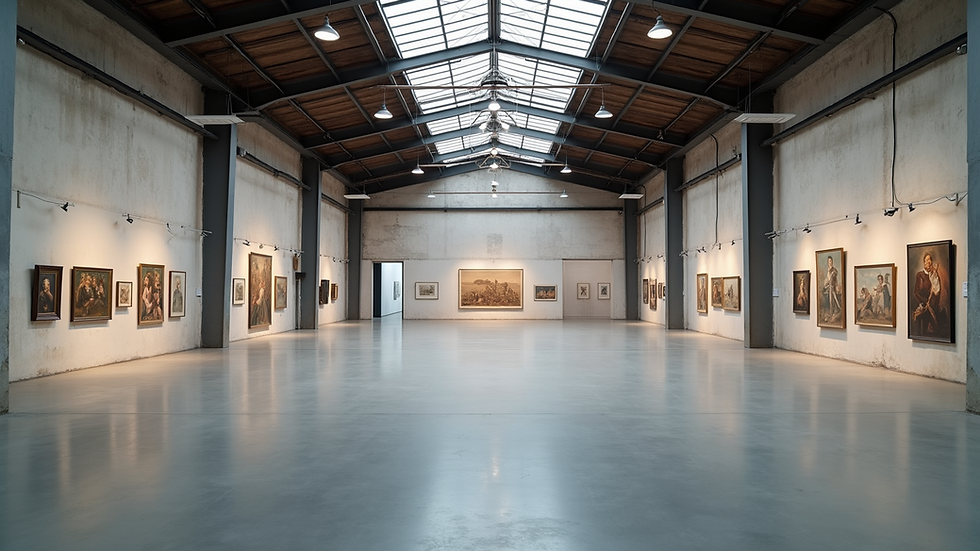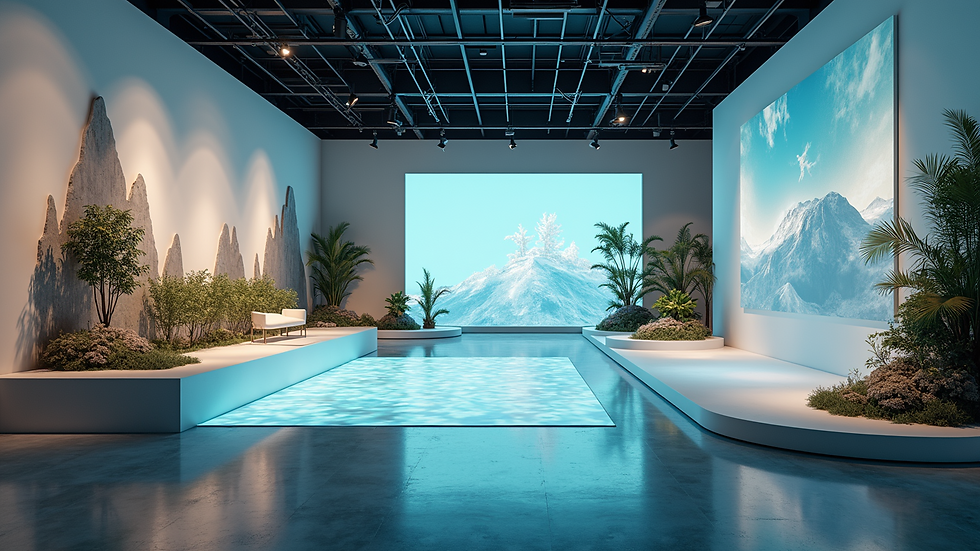Exploring the Most Unconventional Art Exhibitions
- Ahmad Shariff

- Aug 8
- 3 min read
Art exhibitions have evolved far beyond traditional gallery walls. Today, artists and curators are pushing boundaries to create immersive, thought-provoking experiences that challenge how we perceive art. This post explores some of the most unconventional art exhibitions around the world, highlighting innovative concepts and spaces that redefine creativity.
Immersive Installations That Transform Spaces
One of the most exciting trends in contemporary art is the rise of immersive installations. These exhibitions invite visitors to step inside the artwork, engaging multiple senses and creating a memorable experience.
For example, teamLab Borderless in Tokyo offers a digital art museum where projections and interactive elements respond to visitor movements. The entire space becomes a living canvas, blurring the line between observer and participant.
Another notable example is the Rain Room by Random International, which simulates rainfall but stops water wherever a person walks. This creates a surreal environment where visitors can experience rain without getting wet.
Tips for experiencing immersive exhibitions:
Wear comfortable clothing and shoes, as you may spend a lot of time walking or standing.
Take your time to explore every corner; these exhibitions often have hidden details.
Use your smartphone to capture photos, but also remember to enjoy the moment without distractions.

Unique Exhibitions in Unexpected Locations
Art is no longer confined to museums or galleries. Many artists are choosing unconventional venues to showcase their work, creating unique exhibitions that surprise and delight visitors.
For instance, the Sasse Museum in Germany hosts exhibitions in a former industrial building, combining history with contemporary art. This setting adds layers of meaning to the artworks and offers a fresh perspective on the space itself.
Similarly, the Desert X exhibition in California uses the natural landscape as a backdrop for site-specific installations. Visitors explore the desert to discover artworks that interact with the environment, making the journey part of the experience.
If you want to explore more about these unique exhibitions, the Sasse Museum's approach is a perfect example of how location can enhance artistic expression.
How to make the most of exhibitions in unusual locations:
Research the venue beforehand to understand its history and significance.
Plan your visit according to weather and accessibility, especially for outdoor exhibitions.
Engage with any guided tours or informational materials to deepen your appreciation.

Interactive Art That Invites Participation
Interactive art exhibitions encourage visitors to become co-creators rather than passive viewers. This approach fosters a deeper connection with the artwork and often sparks creativity.
An example is Yayoi Kusama's Infinity Mirror Rooms, where visitors enter mirrored chambers filled with lights and patterns. The experience is both visually stunning and emotionally immersive.
Another example is the Museum of Ice Cream, which combines playful installations with sensory experiences like tasting and touching. This exhibition blurs the line between art, entertainment, and social interaction.
Suggestions for engaging with interactive art:
Be open to trying new things and stepping out of your comfort zone.
Follow any instructions carefully to fully participate in the experience.
Share your experience on social media to inspire others to visit.

Art Exhibitions That Challenge Social Norms
Some exhibitions use art as a platform to address social issues and provoke critical thinking. These shows often feature bold themes and unconventional presentation styles.
For example, the Guerrilla Girls use posters, performances, and installations to highlight gender inequality in the art world. Their exhibitions are both educational and confrontational, encouraging viewers to question established norms.
Another example is the "Inside Out Project" by JR, which invites people worldwide to share their portraits and stories through large-scale public art. This participatory project promotes social justice and community empowerment.
How to approach socially charged exhibitions:
Keep an open mind and be prepared to engage with challenging topics.
Take time to read accompanying texts or listen to audio guides for context.
Reflect on how the themes relate to your own experiences and society.
Future Trends in Unconventional Art Exhibitions
The art world continues to innovate, and future exhibitions are likely to become even more experimental. Here are some trends to watch:
Virtual and Augmented Reality: These technologies will create new ways to experience art remotely or enhance physical exhibitions.
Sustainability Focus: Eco-friendly materials and themes addressing climate change will become more prominent.
Cross-Disciplinary Collaborations: Artists will increasingly work with scientists, technologists, and communities to create multifaceted projects.
To stay updated, follow art blogs, museum newsletters, and social media channels dedicated to contemporary art.
Exploring unconventional art exhibitions offers a fresh perspective on creativity and culture. Whether through immersive environments, unexpected locations, interactive elements, or social commentary, these shows invite us to see the world differently and engage with art in new ways. Keep an eye out for upcoming exhibitions near you and embrace the adventure of discovery.








Comments